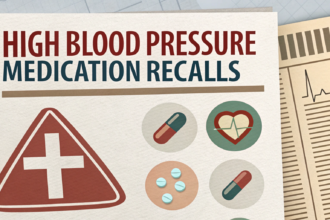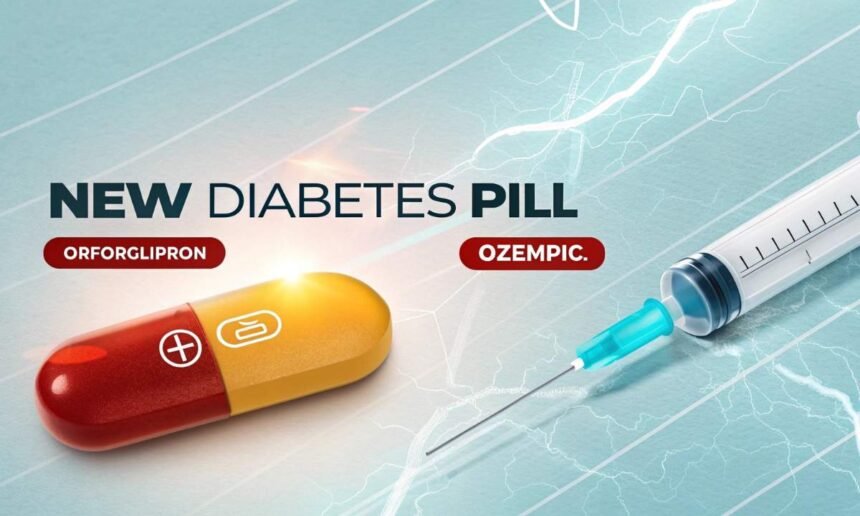A new pill aimed at treating type 2 diabetes has shown striking results in a large international trial and could significantly shift how obesity and diabetes are managed.
The experimental drug, orforglipron, developed by Eli Lilly and Company, is the first non-peptide, oral small-molecule that acts on the GLP-1 receptor, offering a potential alternative to injectable GLP-1 therapies.
Trial results and significance
In the pivotal Phase 3 trial named ATTAIN-2, 1,613 adults with type 2 diabetes, classified as overweight or obese (with an average age of 57 years and an average weight of ~101 kg), were randomized across 136 sites in 10 countries.
Over 72 weeks, participants took either a placebo or one of three daily doses of orforglipron (6 mg, 12 mg, or 36 mg), along with a diet that included a daily 500-calorie reduction.
The results were compelling:
- The 36 mg group lost an average of ~9.6% of body weight (≈9.6 kg) over the 72 weeks.
- The 12 mg group lost ~7.0%, and the 6 mg group ~5.1%.
- The placebo arm lost ~2.5%.
- Notably, 26% of participants in the highest-dose arm achieved more than 15% weight loss.
These outcomes approach the weight loss typically observed with injectables such as semaglutide (brand name Ozempic when used for diabetes), which often delivers 10 – 15% weight reduction in similar timeframes.
In addition, all dosage arms of orforglipron showed improvements in glycaemic control (lower HbA1c), and secondary markers, including blood pressure, inflammation and cardiovascular risk indicators improved as well.
Side-effect patterns mirrored other GLP-1 therapies: nausea, diarrhoea, vomiting, and constipation were the most common adverse events.
Why an oral GLP-1 matters
Until now, GLP-1 receptor agonist therapies have almost exclusively required injections, largely because the peptide molecules are degraded in the digestive tract and cannot survive oral administration.
The novelty of orforglipron lies in its structure: non-peptide, small-molecule, orally absorbed – yet still engages the GLP-1 receptor and triggers the body’s appetite- and glucose-regulating pathways.
From a patient perspective, the implications are substantial: no needles, potentially lower production and distribution costs, and broader access – especially in populations with needle-aversion or in lower-resource settings.
Experts in the trial noted that for people with type 2 diabetes, achieving double-digit weight loss is especially challenging, and an oral option could open new doors.
Regulatory outlook, competition, and real-world context
Despite the positive results, orforglipron is not yet approved by the U.S. Food and Drug Administration (FDA). According to Eli Lilly, the company plans regulatory filings for obesity treatment in 2025 and for type 2 diabetes in 2026.
In the wider landscape, injectable GLP-1s (semaglutide, tirzepatide, etc) are already showing strong weight-loss and cardiovascular-outcome data; tirzepatide, for example, has achieved ~14.7% weight loss in diabetics in earlier trials.
The fact that orforglipron approaches these numbers with an oral route is what gives it novelty.
In India and other markets, the potential for an affordable oral GLP-1 is causing interest. Lilly has stated intentions to bring orforglipron to India, emphasising the need for non-injectable treatments in contexts where injections carry stigma or logistic hurdles.
Cautions and what still needs to be answered
While the results are exciting, several caveats remain:
- Long-term cardiovascular outcome data (i.e., effects on heart attack, stroke, death) are not yet available for orforglipron. Many GLP-1 therapies are approved or guided based on cardiovascular-benefit trials.
- The real-world effectiveness – beyond trial conditions (dietary energy-restriction, high adherence, monitoring) – remains to be seen.
- Safety over longer horizons needs monitoring. Although side effects matched the GLP-1 class, the oral format invites scrutiny of absorption, metabolism, and liver/kidney interactions.
- Regulatory and cost-access issues: even if approved, will the drug be affordable and accessible broadly, especially in middle- and low-income countries?
Conclusion
The development of orforglipron marks what may be a turning point in the treatment of obesity and diabetes: a daily pill that mimics the effects of injectable GLP-1 receptor agonists, delivering near double-digit weight loss and improved glycaemic control in type 2 diabetes.
Given the trial outcomes and its non-injectable format, it has the potential to become a widely accessible therapy – perhaps akin to how metformin became foundational in diabetes care.
As the global obesity and type-2-diabetes epidemics continue to rise – particularly in countries like India, where injectable therapies may face additional cultural or logistical barriers – an oral option could shift treatment paradigms.
But with approval still pending and key long-term data pending, the healthcare community will watch closely.
For patients and clinicians alike, the message is cautiously optimistic: soon we may have a needle-free, powerful tool in the fight against diabetes and obesity – transforming what has been an injectable-dominated field.
Study Published: https://www.thelancet.com/journals/lancet/article/PIIS0140-6736(25)02165-8/abstract












